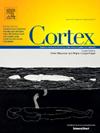The relationship between individual alpha frequency and time perception: Testing the internal clock versus the sampling rate hypothesis
IF 3.3
2区 心理学
Q1 BEHAVIORAL SCIENCES
引用次数: 0
Abstract
Perceiving the duration of events is a fundamental ability for everyday life. Traditional research has focused on the role of alpha oscillations as an endogenous pacemaker for the human internal clock, yet there is limited evidence supporting this idea. An alternative hypothesis proposes that alpha oscillations may underlie a sampling mechanism, where higher alpha frequencies correspond to increased information sampling, resulting in more accurate temporal judgments. In this study, we tested the internal clock versus sampling rate hypothesis by examining the relationship between Individual Alpha Frequency (IAF) and fine-grained time perception. Using resting Electroencephalography (EEG) and Signal Detection Theory (SDT), fifty healthy volunteers performed a time-discrimination task with 100 and 500 msec standard durations. Our results demonstrate that temporal sensitivity (d’) but not temporal bias (c) is influenced by IAF, with higher IAF leading to more accurate time estimates (higher d’). The correlations were observed over frontocentral topographies consistent with previous reports of neural networks involved in time processing and were most pronounced at 100 msec relative to 500 msec, likely due to fluctuations in IAF across multiple cycles. In conclusion, our findings support the relationship between IAF and temporal sensitivity. These results challenge the pacemaker hypothesis and instead suggest a distributed mechanism where alpha oscillations enhance the precision of temporal sampling. Our study adds to the growing body of evidence highlighting the role of IAF in sensory sampling as a generative mechanism for temporal sensitivity as opposed to subjective time perception.
个体α频率与时间感知之间的关系:测试内部时钟与采样率假设。
感知事件的持续时间是日常生活的基本能力。传统的研究集中在α振荡作为人类内部时钟的内源性起搏器的作用上,但支持这一观点的证据有限。另一种假设提出,α振荡可能是采样机制的基础,其中较高的α频率对应于增加的信息采样,从而导致更准确的时间判断。在本研究中,我们通过检查个体α频率(IAF)和细粒度时间感知之间的关系来检验内部时钟与采样率假设。采用静息脑电图(EEG)和信号检测理论(SDT)对50名健康志愿者进行了100和500毫秒标准持续时间的时间分辨任务。我们的研究结果表明,时间敏感性(d‘)而不是时间偏差(c)受到IAF的影响,IAF越高,时间估计越准确(d’)。在前中央地形上观察到的相关性与之前关于涉及时间处理的神经网络的报告一致,并且在100毫秒相对于500毫秒时最为明显,可能是由于IAF在多个周期中的波动。总之,我们的研究结果支持IAF与时间敏感性之间的关系。这些结果挑战了起搏器假说,而是提出了一种分布式机制,其中α振荡提高了时间采样的精度。我们的研究增加了越来越多的证据,突出了IAF在感觉采样中的作用,作为时间敏感性的生成机制,而不是主观时间感知。
本文章由计算机程序翻译,如有差异,请以英文原文为准。
求助全文
约1分钟内获得全文
求助全文
来源期刊

Cortex
医学-行为科学
CiteScore
7.00
自引率
5.60%
发文量
250
审稿时长
74 days
期刊介绍:
CORTEX is an international journal devoted to the study of cognition and of the relationship between the nervous system and mental processes, particularly as these are reflected in the behaviour of patients with acquired brain lesions, normal volunteers, children with typical and atypical development, and in the activation of brain regions and systems as recorded by functional neuroimaging techniques. It was founded in 1964 by Ennio De Renzi.
 求助内容:
求助内容: 应助结果提醒方式:
应助结果提醒方式:


